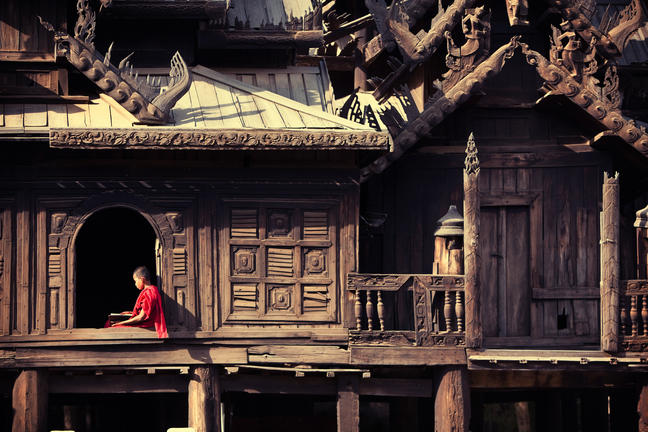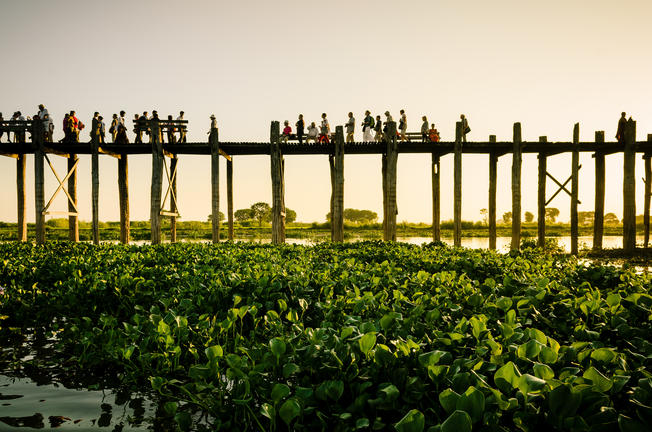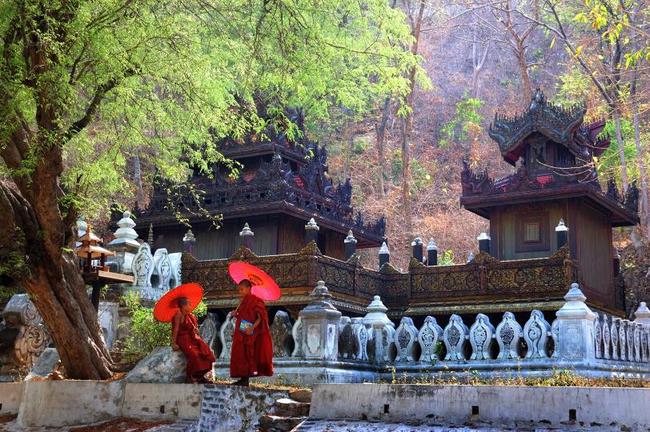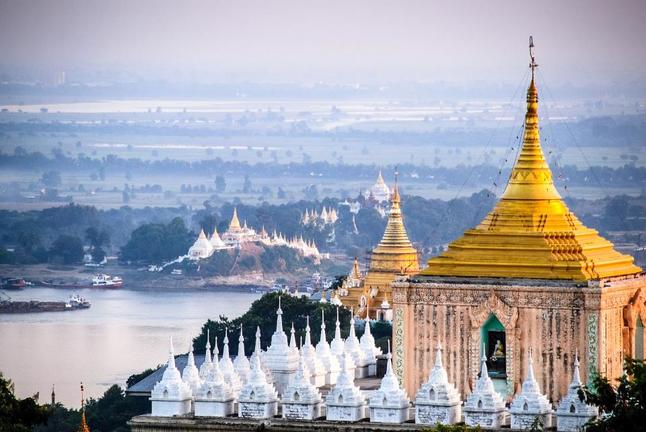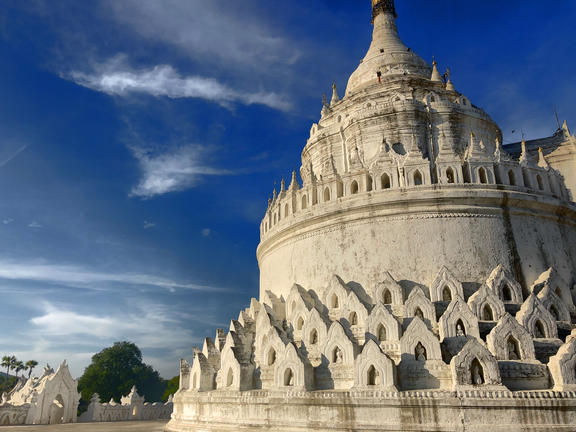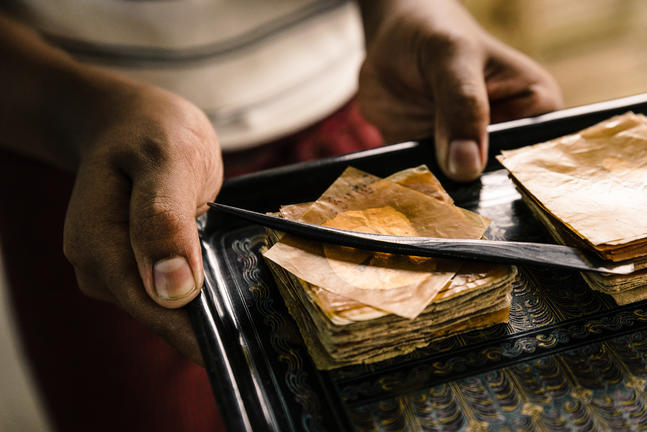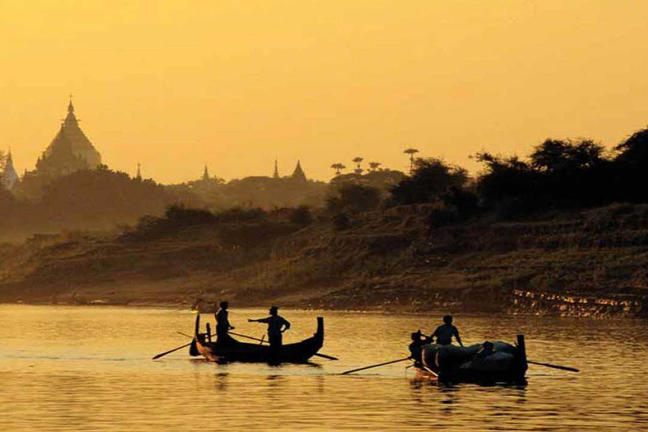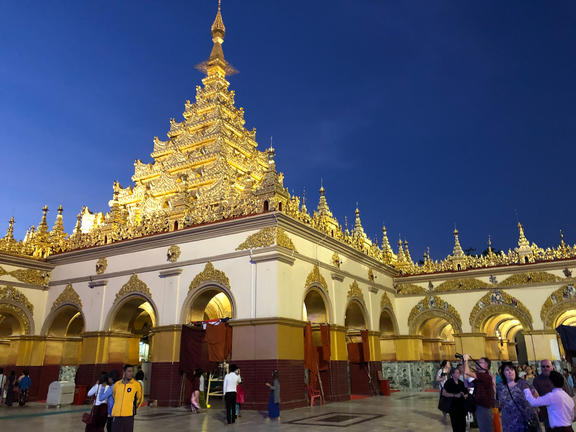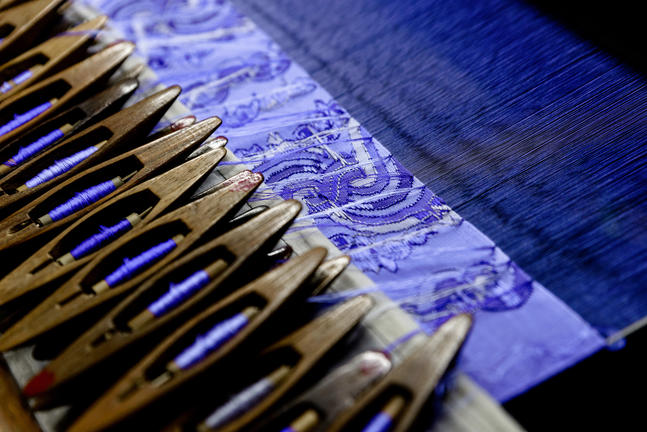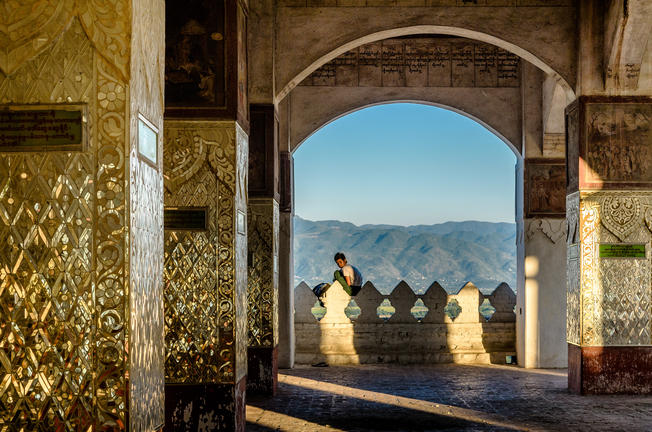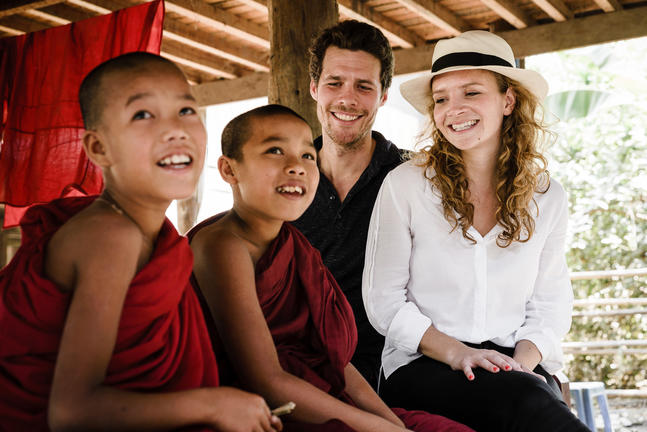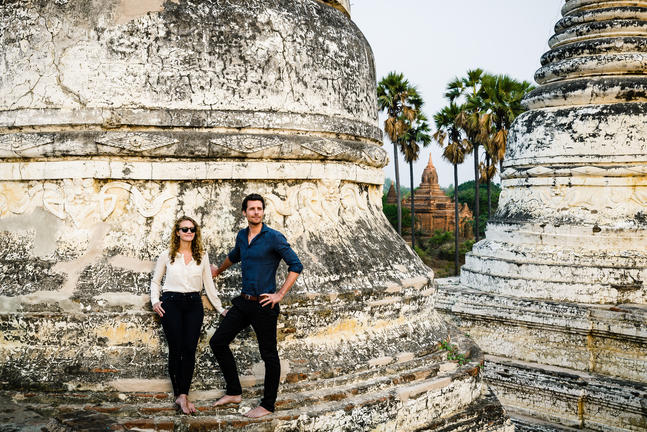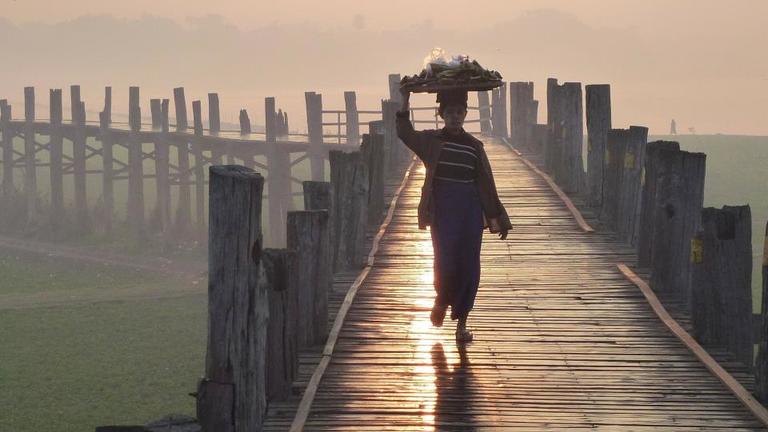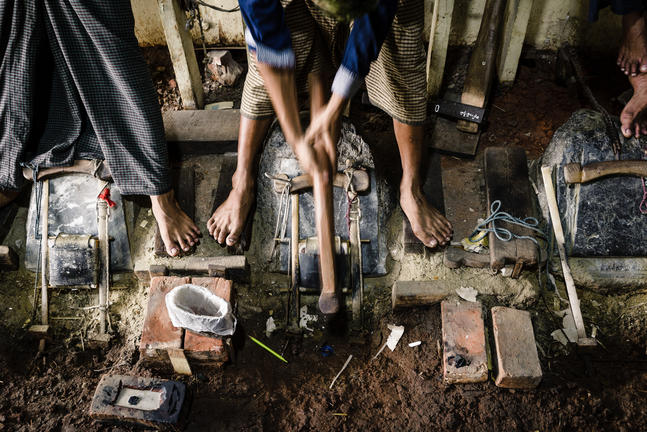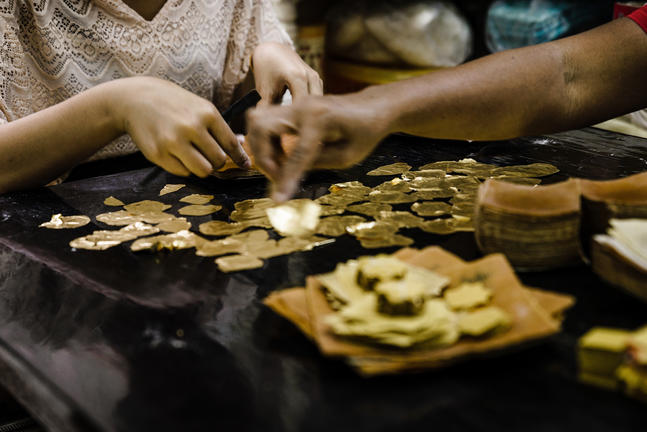The last royal capital of Myanmar. Mention of the word “Mandalay” conjures up sentiments of romance and tragedy, as immortalized in the literary gifts of George Orwell, Rudyard Kipling and Somerset Maugham. The true saga of the last reigning monarch King Thibaw, however, is imbued with romance and tragedy as much as any literary account. Through a combination of deceit, manipulation and false hopes stirred by court advisors and his wife, the fitful reign of King Thibaw ended when the British took Upper Burma in 1885. His family was exiled to India, where they lived in near poverty for the remainder of their lives. Before him, the struggles of the many ancient kings to gain control of the region were as complex and fantastical as a fairy tale.
With British rule, Mandalay’s streets were laid out on a grid system with the large, square palace compound of the former King Thibaw as its epicenter and surrounded by high, red walls and a moat. The effect is unlike any other city in Southeast Asia. With Myanmar’s highest concentration of monks, hundreds of monasteries, and legions of craftsmen, Mandalay is widely regarded as the religious and cultural heart of Myanmar. Among the most venerable pagodas are the Mahamuni Paya, now home to an ancient Buddha image from Rakhine State in western Myanmar, covered in gold leaf by devout Buddhists over many years; and Kuthodaw Paya, with 729 marble slabs bearing inscriptions of the entire Buddhist Tripitaka canon placed around the central stupa. According to legend, on a visit to Myanmar accompanied by his disciple Ananda, the Buddha climbed the 236 meter high Mandalay Hill overlooking the surrounding plains. Standing at the summit, he pointed with arm outstretched to where the Mandalay Palace stands today, and declared that a great city would be founded there after 2,400 years. That year corresponds to 1857 AD, when King Mindon ordered the move of the royal capital from Amarapura to a new city constructed at the foot of Mandalay Hill and bearing its name. Near the top of the hill, a standing Buddha image represents the prophecy.
